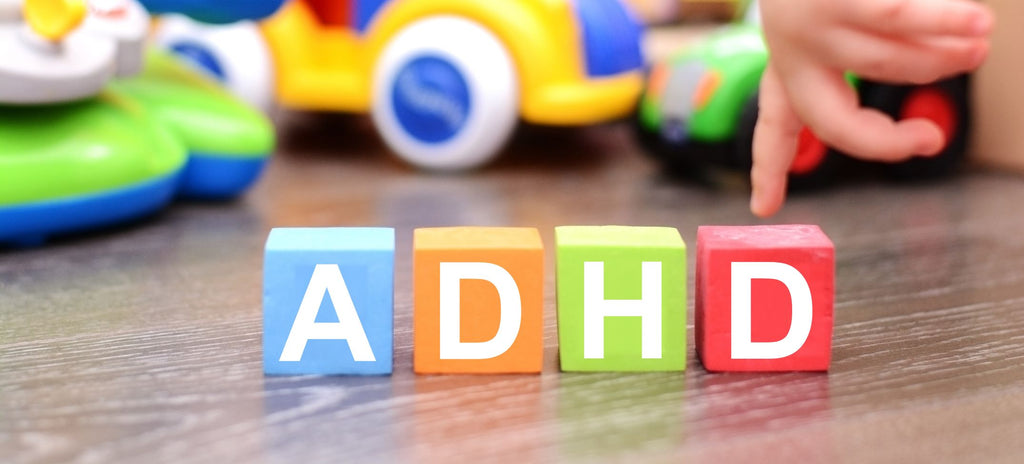
Attention deficit hyperactivity disorder, or as most people refer to it, ADHD, is one of the most common neurodevelopmental disorders in children. Most children diagnosed with ADHD are usually diagnosed at an early age when it becomes evident that their behavior is noticeably different from other children in their age group. The National Institute of Mental Health (NIMH) defines ADHD as a disorder marked by an ongoing pattern of inattention and hyperactivity-impulsivity that interferes with functioning or development. Early signs can include restlessness, hyperactivity, impulsiveness, and difficulty focusing or paying attention to things.
But did you know that ADHD may not be a “one-size-fits-all” diagnosis? In fact, there are various types of ADHD (previously known as simply ADD). The effects of ADHD tend to vary from person to person, and because of that, it is crucial to understand how each type is different and how treatment options may vary.
What Are The 7 Types Of ADHD?
Before we go into the various types of ADHD, let’s recap its history. One of the first things many people ask is whether or not ADHD is different from ADD (attention deficit disorder), and the answer is a lot simpler than you might think. Although ADD was once the correct term for the same diagnosis, the official and most up-to-date term for the medical condition is ADHD–even if the individual does not demonstrate hyperactivity behavior. Essentially, ADD was modified to include hyperactivity in 1987. Since then, there have been various symptoms that go with different types of inattentiveness, which we will be discussing. Currently, ADHD is divided into three main types:
- Inattentive type
- Hyperactive-impulsive type
- Combination type
However, in 2013, psychiatrist and nuclear brain imaging specialist Dr. Daniel G. Amen released a book titled “Healing ADD: The Breakthrough Program that Allows You to See and Heal the 7 Types of ADD,” which provided insight into attention disorders. He uses the term ADD in the title of his book rather than ADHD because he believes ADD is a more appropriate umbrella term for the various types of ADHD, mainly because not all types include hyperactivity. His book aims to identify, examine, and explain the different types of ADD/ADHD and discuss various treatments for each type. It must be noted that not everyone agrees with Dr. Amen’s classifications. In any case, here are the 7 types of ADD/ADHD that are identified in his book and the most common symptoms associated in each:
(We will leave the classifications as written in his book, which uses ADD instead of ADHD–however, this is not the official medical term but is still recognized within the ADHD community.)
1. Classic
Symptoms of classic ADD are what most people think of when they think of ADHD. It involves classic symptoms of inattentiveness, hyperactivity, and impulsivity. SPECT scans have determined that people with classic ADD lack blood flow in the prefrontal cortex, cerebellum, and basal ganglia. Since the basal ganglia are associated with dopamine production, treatment for this type involves traditional treatments such as stimulants to increase dopamine levels.
2. Inattentive
Individuals with inattentive types generally do not suffer from hyperactivity. However, they show signs of inattentiveness, lethargy, and may even suffer from a lack of motivation. People categorized under this type may also have reduced blood flow to their prefrontal cortex, which causes low dopamine levels. As a result, their treatment is similar to those with classic ADD and focuses on raising or increasing dopamine levels in the brain.
3. Over-Focused
The core symptoms of this type are similar to those of Classic but with additional challenges when shifting attention or switching tasks or thoughts. Individuals with overfocused ADD have a habit of becoming stuck with negative thoughts and may demonstrate obsessive behaviors, hyperfocus, constant worry, and difficulties being flexible to change. This type is often misdiagnosed as Autism Spectrum Disorder because of some of the symptoms, but it is not the same. If you want to learn more about ADHD vs ASD, check out this blog. Treatment with this type typically involves medication or supplements that raise serotonin and dopamine levels.
4. Temporal Lobe
Those who deal with temporal lobe ADD typically exhibit the same symptoms of classic ADD (or ADHD) but are often accompanied by other behaviors such as irritability, aggression, mood instability, and mild paranoia. People affected with temporal lobe ADD are said to have reduced brain activity in their prefrontal cortex and irregularities in their temporal lobes.
5. Limbic
Symptoms of limbic ADD involve the core symptoms of classic ADD coupled with chronic sadness (not depression) moodiness, low energy, frequent feelings of helplessness or excessive guilt, and chronic low self-esteem. The limbic region of the brain is responsible for controlling moods. Treatment for limbic ADD generally does not involve classic treatment options such as stimulants but can include supplements such as fish oil, antidepressants, and lifestyle changes.
6. Ring of Fire
Also known as "ADD plus," ring of fire ADD is given to individuals with an overactive brain (overactivity in the cerebral cortex). In addition to experiencing the core symptoms of classic ADD (or ADHD), other symptoms include sensory sensitivities, unpredictable behavior, aggression, anxiety, and fearfulness.
7. Anxious
Anxious ADD involves the same symptoms as classic ADD but is coupled with tension and anxiety. These individuals often exhibit physical symptoms of stress such as headaches, stomachaches, and abruptly freezing in anxiety-inducing situations. Children and adults with anxious ADD have increased activity levels in their basal ganglia.
If you are a parent of a child with ADHD, it's essential to understand that not every child's symptoms may be the same. As a result, not all treatment options are the same. Your child's treatment journey will depend on various factors, but standard treatment options include medication, supplements, talk therapy, behavioral therapy, exercise, and even dietary interventions.
